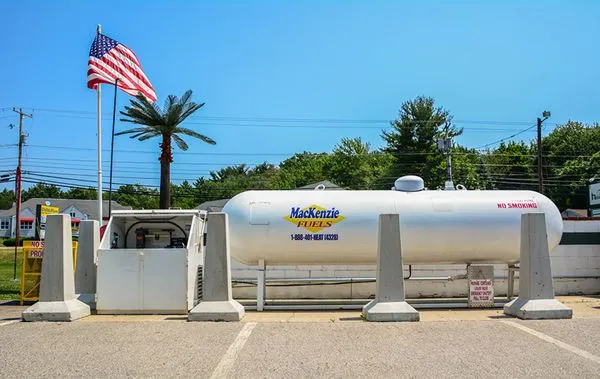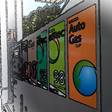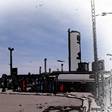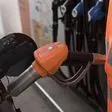
Propane Stations in the United States

Table of Propane Stations in the United States
| SUPPLIER | ADDRESS | CITY | |
|---|---|---|---|
| Love´s | 7748 Route 53 | BATH | |
| Love´s | 2974 Lenwood Rd | BARSTOW | |
| Love´s | 3101 S 10th St | MOUNT VERNON | |
| Love´s | 11361 S I-35 | SAN ANTONIO | |
| Love´s | 643 S Highway 90 | BENSON | |
| Love´s | 1300 Horizon Blvd | EL PASO | |
| Love´s | 400 Pecan Park Road | JACKSONVILLE | |
| Love´s | 13190 Deshler Rd | NORTH BALTIMORE | |
| Love´s | 13615 Blue Lick Rd | MEMPHIS | |
| Love´s | 1276 Rush Rd | NAPAVINE | |
| Love´s | 1191 S 1st Street | BENNETT | |
| Love´s | 200 Lower River Road NW | CHARLESTON | |
| Love´s | 845 SE 89th St | OKLAHOMA CITY | |
| Love´s | 12501 Apex Great Basin Pkwy | LAS VEGAS | |
| Love´s | 6457 Old Salem Rd NE | ALBANY | |
| Love´s | 6560 Dixie Highway | BRIDGEPORT | |
| Love´s | 1126 County Hwy 35 | HAMILTON | |
| Love´s | 3700 Mountain Road | HAMBURG | |
| Love´s | 13300 Ali Ghan Road NE | CUMBERLAND | |
| Love´s | 15402 Hornsby Street NE | COLUMBUS | |
| Love´s | 2603 Sam Wilson Rd | CHARLOTTE |
Map of Propane Gas Stations in United States
List of Propane Gas Stations in the United States
Network of Propane Gas Stations in the United States
Liquefied Petroleum Gas (LPG), more commonly called propane in the United States, has gained popularity in the United States as a viable energy alternative for both commercial vehicles and personal use. From the opening of the first Propane station in the 1970s to growth projections for 2025, Propane fueling stations have evolved significantly. This article discusses the trajectory of these stations, their most important locations, the main market operators, and how to obtain an updated map of Propane gas stations.
Evolution since the first propane fueling station
The first propane fueling station open to the public in the United States was established in 1972 in Houston, Texas. This opening marked the beginning of a new era for alternative fuels, driven by the oil crisis and the need to find more efficient energy solutions. In its early years, propane was primarily used in commercial fleets and government vehicles, due to its lower cost and emissions compared to gasoline and diesel.
During the 1980s and 1990s, the use of propane as a vehicle fuel experienced considerable growth. Propane adoption was driven by a combination of factors, including government incentives, advances in vehicle conversion technology, and an increasing focus on emissions reduction. By the late 1990s, the number of gas stations offering propane exceeded 2,500, with a strong presence in states such as California, Texas, and Florida.
As the 21st century dawned, propane continued to expand in the U.S. market. The modernization of distribution infrastructure and the development of new propane storage and dispensing technologies contributed to greater fuel accessibility. As more consumers and businesses turned to cleaner, more economical fuel options, the number of stations offering propane increased significantly. In 2010, there were more than 3,500 propane gas stations nationwide.
Current Projects and Forecasts for 2025
By 2024, there are estimated to be more than 4,000 gas stations in the United States offering Propane. This expansion has been especially notable in states with proactive alternative fuel policies, such as California, New York, Illinois, and Texas. Propane’s continued growth has been supported by tax incentives, stricter environmental regulations, and demand for more sustainable energy solutions.
By 2025, more than 300 new Propane stations are expected to open, concentrated primarily in metropolitan areas and key transportation corridors. Cities with the highest growth forecasts include Los Angeles, Chicago, Houston, and New York. This growth is also driven by investments from large operators looking to expand their station network and capture an increasingly sustainability-conscious customer base.
Key Locations of Propane Stations
Major metropolitan areas in the United States are home to the highest concentration of propane gas stations. Among the most important locations are:
- Los Angeles, California: With more than 200 Propane stations, Los Angeles is one of the leading cities in the adoption of alternative fuels.
- Houston, Texas: A pioneer city in Propane, it has more than 150 stations that serve a wide range of users, from commercial fleets to individuals.
- Chicago, Illinois: With more than 100 stations, Chicago has seen significant growth in the last decade due to its environmentally friendly policies.
- Miami, Florida: Florida is a key state, with more than 120 stations, mostly concentrated in Miami and other urban areas.
- New York, New York: With more than 130 stations, New York remains a key market for Propane, driven by the by state environmental policies.
Largest Propane Station Operators in the U.S.
The US Propane fueling station market is dominated by several key operators that have expanded their networks over the years. Below are some of the largest operators and their expansion plans:
- AmeriGas: One of the largest Propane providers in the US, with over 1,000 stations. AmeriGas plans to expand its network in states such as California and Texas, with 50 new stations opening by 2025.
- Ferrellgas: With over 800 stations, Ferrellgas is a major player in the market. Its plans for 2025 include expansion in the Northeast of the country, with 30 new stations projected.
- Suburban Propane: Suburban Propane operates over 600 Propane stations across the country. The company has announced plans to increase its presence in the southeastern United States, with 40 new stations opening in the coming years.
- Propane Plus: With a focus on the Midwest and Southern regions, Propane Plus has more than 400 stations. Its plans for 2025 include expansion into rural and suburban areas, with 25 new stations planned.
- Clean Energy Fuels: Specializing in alternative fuels, Clean Energy Fuels operates more than 300 Propane stations and plans to expand in the Western states, with a focus on California, Nevada and Arizona.
References
- https://www.amerigas.com/
- https://www.ferrellgas.com/
- https://www.suburbanpropane.com/
- https://propaneplus.com/
- https://www.cleanenergyfuels.com/
- https://www.afdc.energy.gov/fuels/propane_locations.html









